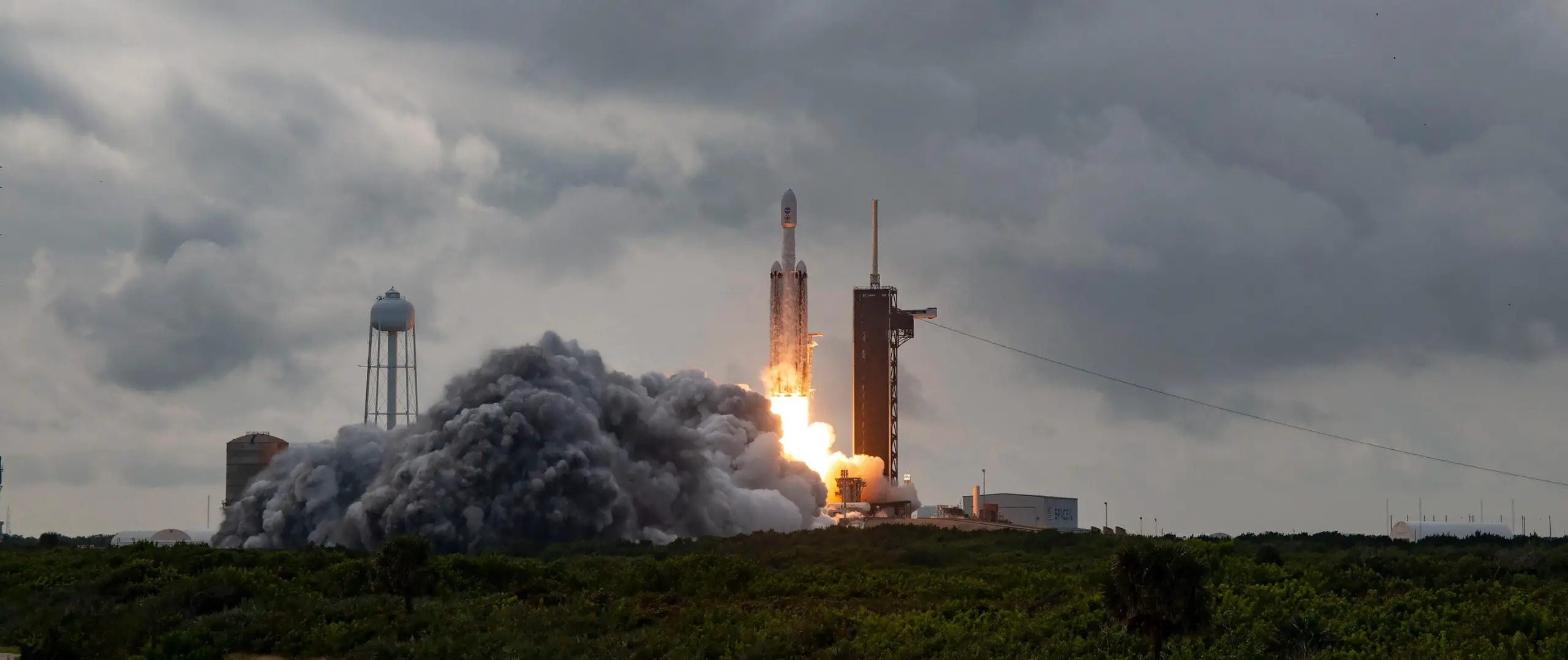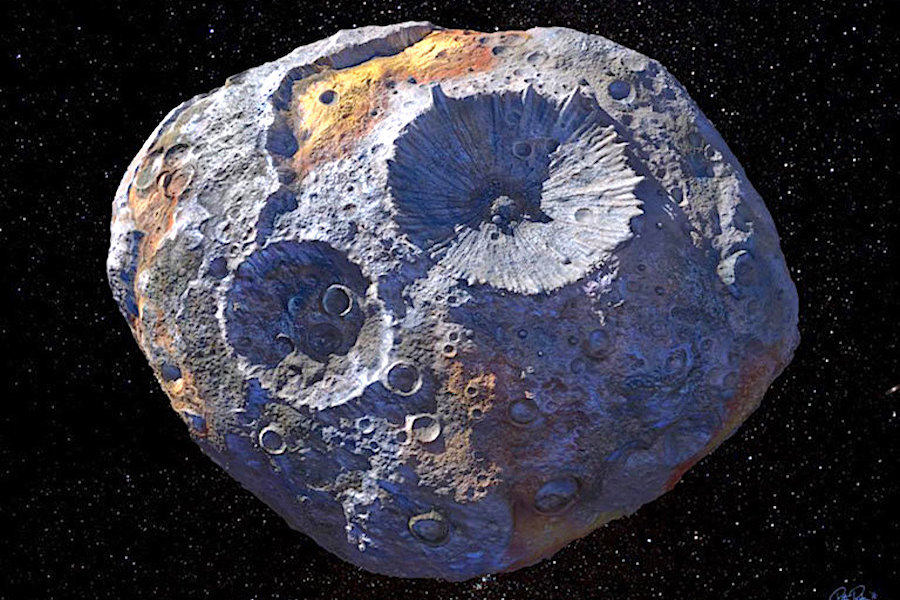SpaceX And NASA Embark On Mission To Asteroid Psyche
Explore the joint mission as SpaceX and NASA embark on mission to asteroid Psyche. A groundbreaking journey to uncovering cosmic mysteries.
Author:Daniel JamesReviewer:Anderson PattersonOct 18, 20235.3K Shares199.9K Views

As Earth faces turmoil from ongoing conflicts, SpaceX and NASA embark on mission to asteroid Psyche. The mission, slated for launch aboard a SpaceX Falcon Heavy rocket, could commence as early as tomorrow. The spacecraft's ultimate destination lies within the asteroid belt, a vast region nestled between Mars and Jupiter.
Psyche's Metallic Core
According to The Byte, the SpaceX rocket, aptly named Psyche, seeks to unravel the mysteries surrounding this unique metal asteroid, believed to be the remnant of an ancient planetary core. The potential outcomes of this mission could significantly advance our understanding of our solar system.
Apart from investigating the solar system, the SpaceX rocket may provide insights into Earth itself, as it shares similarities with Psyche in terms of a metallic core. This could offer researchers a clearer perspective on the formation of Earth, a process shrouded in mystery due to the inaccessibility of Earth's core. Lindy Elkins-Tanton, the mission's lead investigator and an Arizona State University professor, explained that without a mission like this, Earth's core remains "too hot" and "too deep" for study.
Despite the excitement surrounding this cosmic exploration, there's a considerable wait ahead. The SpaceX vessel is unlikely to reach Psyche until 2029, presenting a six-year journey. Upon arrival, the spacecraft will orbit Psyche for two years, capturing images and transmitting valuable data back to Earth.
Psyche's composition, estimated to consist of 30 to 60 percent metal, with the remainder being silicate, sets it apart from other space rocks, which are primarily composed of clay and silicate rock. Interestingly, the metallic riches of Psyche have attracted the attention of some of the world's wealthiest individuals who hope to stake a claim on this cosmic treasure.
However, skepticism exists, partly due to the association with Elon Musk, known for his diverse business ventures and controversies. From Tesla to X (formerly known as Twitter), Musk's ventures have faced their share of challenges. Nevertheless, the world anticipates the outcome of the Psyche mission in six years, as NASA embarks on a quest to unlock the secrets of one of the most enigmatic objects in the asteroid belt.
NASA's Quest For Cosmic Riches - The Psyche Mission
NASA has launched a remarkable mission to explore a celestial object of unparalleled worth in the asteroid belt—the metal-rich asteroid 16 Psyche. This asteroid is not only abundant in gold but also boasts significant reserves of iron and nickel, with an estimated total value of a mind-boggling $10 quadrillion. If successfully mined and brought back to Earth, the resources on Psyche could potentially make every inhabitant of our planet a billionaire.
However, NASA has clarified that mining Psyche is not the mission's primary objective. Instead, the agency's aim is to gain insights into planetary cores and the processes that shape planets.
A press release from NASA emphasized this goal, stating:
“„With less than 100 days to go before its launch, teams of engineers and technicians are working almost around the clock to ensure the orbiter is ready to journey 2.5 billion miles to a metal-rich asteroid that may tell us more about planetary cores and how planets form.- NASA
Situated between Mars and Jupiter, 16 Psyche follows an orbit that spans a distance ranging from 235 million to 309 million miles from the Sun. Scientists anticipate that the spacecraft will reach its destination around July 2029 and receive a velocity boost from Mars when it passes the red planet in May 2026.
Once in orbit around Psyche, the spacecraft will employ various instruments, including a multispectral imager, a gamma-ray and neutron spectrometer, a magnetometer, and a radio instrument for gravity measurements, to comprehensively study the asteroid.
While other metal-rich asteroids exist in our solar system, NASA's selection of 16 Psyche was deliberate. It is the largest of its kind and has likely remained relatively unaltered by space impacts.
As Nicola Fox, the Associate Administrator for NASA's Science Mission Directorate, noted:
“„Psyche is by far the largest, and that's why we want to go to it because the smaller ones are more likely to have been changed by things impacting them, whereas the big one, we think, is going to be completely unchanged.- Nicola Fox
In essence, NASA's mission to Psyche represents a profound scientific endeavor aimed at unraveling the mysteries of planetary formation and the potential riches of the cosmos, all while steering clear of economic disruptions.

Daniel James
Author
Daniel James is a distinguished gerontologist, author, and professional coach known for his expertise in health and aging.
With degrees from Georgia Tech and UCLA, including a diploma in gerontology from the University of Boston, Daniel brings over 15 years of experience to his work.
His credentials also include a Professional Coaching Certification, enhancing his credibility in personal development and well-being.
In his free time, Daniel is an avid runner and tennis player, passionate about fitness, wellness, and staying active.
His commitment to improving lives through health education and coaching reflects his passion and dedication in both professional and personal endeavors.

Anderson Patterson
Reviewer
Anderson Patterson, a tech enthusiast with a degree in Computer Science from Stanford University, has over 5 years of experience in this industry.
Anderson's articles are known for their informative style, providing insights into the latest tech trends, scientific discoveries, and entertainment news.
Anderson Patterson's hobbies include exploring Crypto, photography, hiking, and reading.
Anderson Patterson's hobbies include exploring Crypto, photography, hiking, and reading.
In the Crypto niche, Anderson actively researches and analyzes cryptocurrency trends, writes informative articles about blockchain technology, and engages with different communities to stay updated on the latest developments and opportunities.
Latest Articles
Popular Articles
